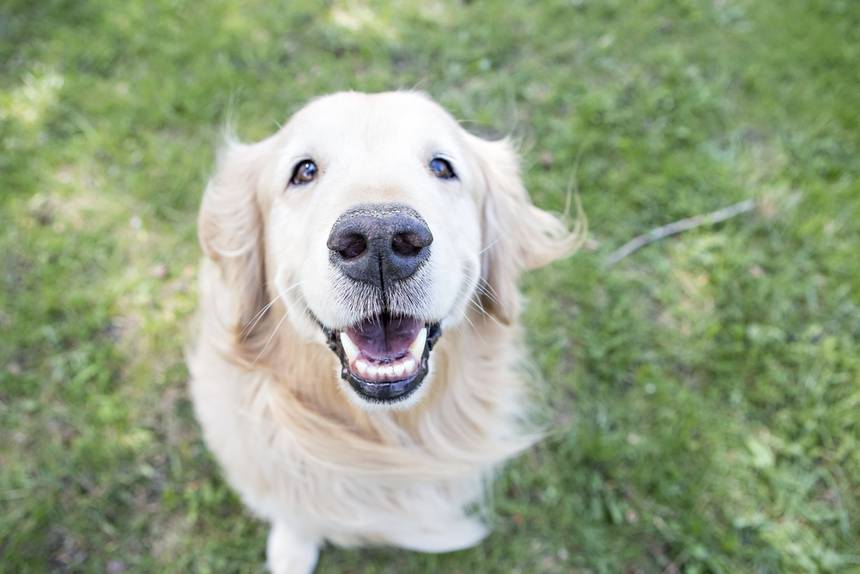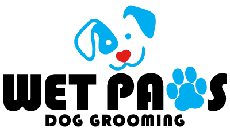
Researchers have identified many of the gestures that dogs use to get humans to do their bidding.
It’s probable that in the fantasy world of every pet lover, their companion animal speaks the same language as they do. Who wouldn’t want a dog or cat that could express themselves in words? Sure, given the insistence of some of the more energetic dogs, it might become a bit taxing. And the pre-dawn cat melodrama expressing the dire and immediate need for food would reach whole new heights. But still.
However, until some futuristic genius devises a way for humans and their pets to strike up a conversation, we’ll just have to rely on the ol’ non-verbal signaling. And as any pet owner knows, animals are pretty good at this.
When it comes to dogs, research looking into dog–human communicative has mostly focused on dogs’ ability to understand gestures coming from a human. But now a team of researchers has looked at things the other way around: Pet dogs’ abilities to produce gestures that can be understood by humans.
Working with 37 dogs in their homes, the researchers conclude, “Our study exposes impressive gesturing abilities in a non-primate mammal; especially when viewed in the context of the cross-species rather than intraspecific communication.”
The team conducted the research in the context of “referential gestures,” actions used by a signaller to draw a recipient’s attention to a specific object, individual or event in the environment. Referential gestures are non-accidental and “mechanically ineffective movements of the body which are repeated and elaborated on until they elicit a specific response from an intended recipient.”
In total, the dogs came up with 47 potential referential gestures, which the researchers narrowed down to 19 that had the five features of referential signaling. As described in the study, they are:
Roll over: Rolling onto one side of the body and exposing the chest, stomach and groin
Head under: Plunge headfirst underneath an object or human
Head forward: Move the head forwards and up to direct a human’s appendage to a specific location on the body
Hind leg stand: Lift front paws off the ground and stand on hind legs, front paws are not resting on anything
Head turn: Head is turned from side to side on the horizontal axis usually between a human and an apparent object of interest
Shuffle: Shuffle whole body along the ground in short movements, performed whilst in roll over position
Back leg up: Lifting of a single back leg whilst lay on one side of the body
Paw hover: Hold one paw in mid-air whilst in a sitting position
Crawl under: Move entire or part of body underneath an object or a human’s appendage
Flick toy: Hold toy in the mouth and throw it forwards, usually in the direction of a human
Jump: Jump up and down off the ground, human or an object, usually while staying in one location
Paw reach: Placing a single paw or both paws underneath another object to retrieve an object of apparent interest
Nose: Pressing nose (or face) against an object or human
Lick: Licking an object or human once or repetitively
Front paws on: Lifting both paws off the ground and resting them on an object or human
Paw rest: Lifting a single front paw and resting it on an object or human
Head rub: Involves rubbing the head against an object or human on which the signaller is leaning on
Chomp: Involves opening the mouth and placing it over the arm of a human whilst repeatedly and gently biting down on the arm
Paw: Lifting of a single front paw to briefly touch an object or human
The gestures were then categorized by their “apparent satisfactory outcome” (ASO). The ASOs were determined by a) a desire and b) that desired being satisfied. In other words, the dog wanted something, signaled, and produced an outcome that resulted in ending the gesture. They identified eight ASOs at first, but dropped three of them because they were infrequent; another, “Play with me!” was also excluded as :some gestures used during play are also used with other meanings in other ASOs,” notes the paper. In the end, they worked with the four ASOs that were the most frequently observed:
“Scratch me!”
“Give me food/drink”
“Open the door”
“Get my toy/bone”(Obviously, the unavoidable puppy dog eyes indicate a “please,” right?)
The authors note: “Our results also revealed that dogs call upon a portfolio of referential gestures to indicate a single reward,” which demonstrates, they say, that dogs can elaborate on their initial gesture when an appropriate response from the recipient has not been elicited.
Now again, none of this may come as a surprise to anyone who has spent time with dogs, but it seems important that it is being addressed and codified by science. Animals don't have a voice and all too often suffer miserably because of it. Imagine a factory farm in which all the animals were pleading for mercy in words we clearly understood? There would have to be a lot more compassion. The more we can understand animals, whether dogs or or other creatures, perhaps the more enlightened we may become to their welfare. And in the meantime ... now we know when the pup wants his toy.
Sources: treehugger.com. The study, Cross-species referential signalling events in domestic dogs (Canis familiaris), was published in Animal Cognition.
4244 Madison Avenue, Trumbull, CT 06611
© 2016-2022 Wet Paws Dog Grooming, LLC. All rights reserved.

